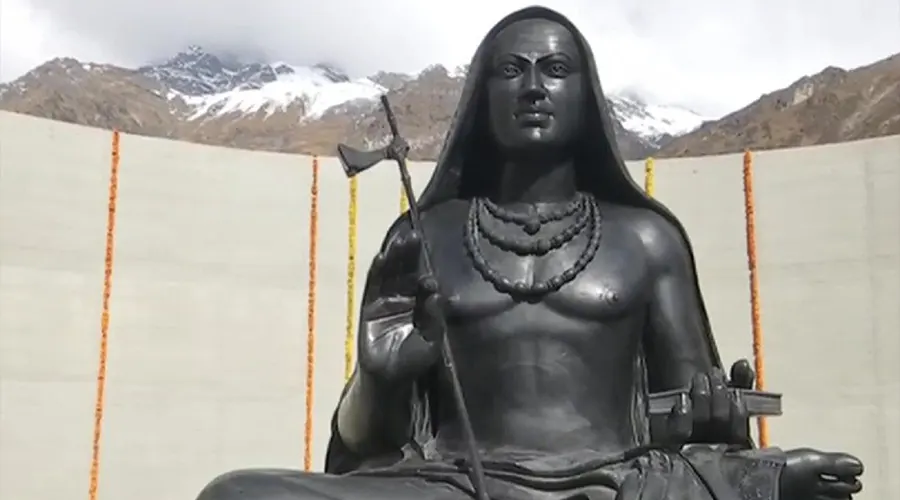12 Foot Adi Guru Shankaracharya Statue at Kedarnath
Prime Minister Narendra Modi unveiled a 12-foot-tall statue of Adi Guru Shankaracharya in Kedarnath, where the acharya is believed to have attained samadhi at the age of 32 in the ninth century, on 5th November 2021.
Made from chlorite schist, the 35-ton Shankaracharya statue was built on the seer’s samadhi sthal which was remodeled after being badly damaged in the 2013 floods. “Adi Shankaracharya’s principles and teachings have immense importance in the present day. His life has been extraordinary, he devoted himself to the well-being of the common man, “said the Prime Minister, adding that” the faithful of the seer is present here in spirit “, referring to the simultaneous broadcast of the event in jyotirlingas and established mathematics the old seer.
About Adi Shankaracharya:
- Adi Shankaracharya was born in Kaladi village on the bank of the Periyar, the largest river in Kerala
- He was a disciple of the scholar Govindacharya.
- He was constantly on the move — bearing the flag of Advaita Vedanta, challenging prevailing philosophical traditions including Buddhism and Jainism.
- He is believed to have established the ritual practices at the Badri and Kedar Dhams.
Adi Shankaracharya’s Literary works:
- Adi Shankara is generally identified as the author of 116 works — among them the celebrated commentaries (bhashyas) on 10 Upanishads, the Brahmasutra and the Gita, and poetic works including Vivekachudamani, Maneesha Panchakam, and Saundaryalahiri.
- He also composed texts like Shankarasmrithi, which seeks to establish the social supremacy of Namboothiri Brahmins.
What is Advaita Vedanta?
- Advaita Vedanta articulates a philosophical position of radical nondualism, a revisionary worldview that derives from the ancient Upanishadic texts.
- According to Advaita Vedantins, the Upanishads reveal a fundamental principle of nonduality termed ‘brahman’, which is the reality of all things.
- Advaitins understand brahman as transcending individuality and empirical plurality.
- They seek to establish that the essential core of one’s self (atman) is brahman. The fundamental thrust of Advaita Vedanta is that the Atman is pure non-intentional consciousness.
- It is one without a second, nondual, infinite existence, and numerically identical with brahman.
Shankara’s contested legacy:
The essence of Adi Shankara’s philosophy is encapsulated in the much-quoted formulation: “Brahma Satyam Jagan-Mithya, Jivo Brahmaiva Naaparah” (brahman alone is real, this world is an illusion/ and the jiva is non-differential from brahman).
- Custodians of the caste system cite Shankara’s commentaries to justify the unequal and unjust social order, whereas others claim these are extrapolations and point to works like Maneesha Panchakam to suggest a different reading of the acharya’s outlook.
- Among the interpreters of his philosophy would be those who suggested that the Advaita Vedanta borrowed the categories of Buddhist thinkers and called him the Prachhanna Buddha (Buddha in disguise), to Sri Narayana Guru who in the 20th century offered a radical reading of Advaita Vedanta to dismantle the theory and praxis of caste.


Comments (0)